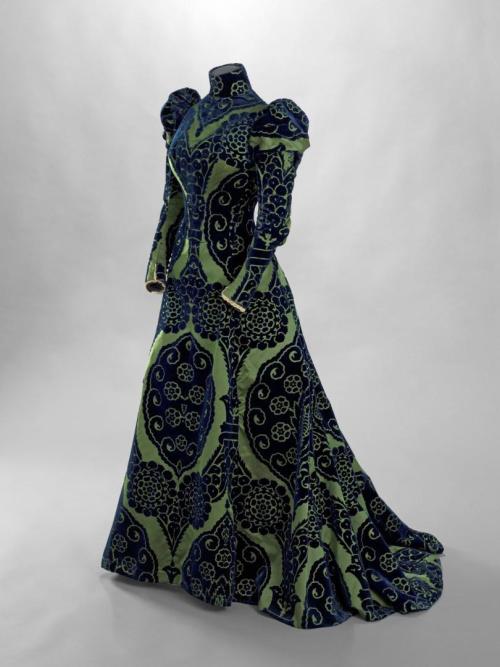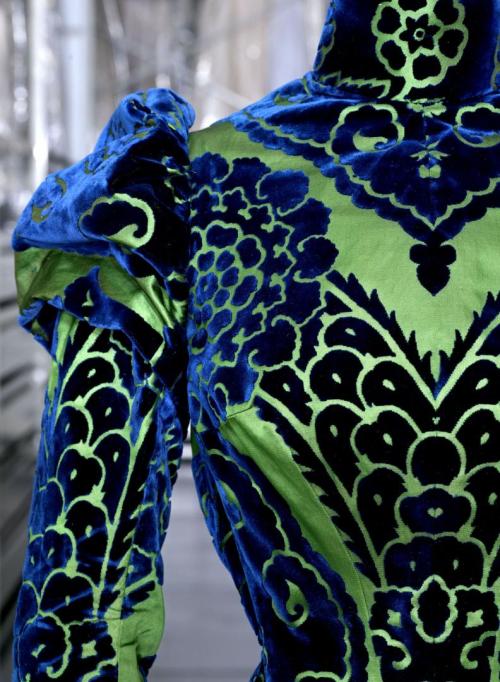fashionsfromhistory:soybeansaurus:pedeka:fashionsfromhistory:Dress House of Worth c.1897 Palai
fashionsfromhistory:soybeansaurus: pedeka: fashionsfromhistory: Dress House of Worth c.1897 Palais Galliera It was probably dyed with arsenic and is poisonous to wear. But it’s beautiful. If that’s how I go then that’s how I go, I wanna wear this 24/7 This has come up on a couple of my posts and I think it’s time to bust some myths.TL;DR: Arsenic poisoning was a real danger in Victorian society but it’s highly unlikely it was caused by your dress. In fact the dresses were probably the least dangerous arsenic dyed items!First, this dress is past the time when cloth would be dyed with arsenic. Victorians were well aware of the dangers of arsenic by the 1860s. In fact, in 1859 a non-toxic alternative had been developed (Interwoven). It’s far more likely that the actual makers of the pigment would die seeing as they were in direct contact with the arsenic, like Matilda Scheurer in 1861. Arsenic was found in much higher levels in the fake fabric flowers that were very popular at the time (Fashion Victims via Jezebel). It’s kind of similar to how mercury poisoning was a danger to hatters, not particularly to the person wearing the hat. The woman wearing the outfit would have a whole host of underthings on that would protect her skin while the maker was in contact with the arsenic with no protection.Items that were far more likely to cause arsenic poisoning were gloves and stockings. These items are in direct contact with the skin and more importantly, your hands and feet get sweaty. Sweat allows the arsenic to be absorbed by the blood stream (Museums). “As late as 1871, a “lady who purchased a box of green-coloured gloves at a well-known and respectable house” suffered from repeated skin ulcerations around her fingernails until arsenical salts were detected” (Fashion Victims via Jezebel). Seeing as a dress does not come into direct contact with the skin, the arsenic can’t be absorbed by the blood stream. Arsenic poisoning really depends on quantity over quality. If we chug some arsenic laced wine, we’re a goner. If we absorb a small bit from our gloves or stockings, our blood stream will eventually filter it out. If the levels are high enough, you would have some nausea or vomiting or experience some damage on your skin like the lady above (CDC Arsenic Fact Sheet). In fact, the boxes that these items were stored in could be more of a danger than the accessory itself. “Retailers used green or green-trimmed “band” boxes to sell, carry, and store accessories. Tests of identical green paper shoe boxes in the Bata Shoe Museum revealed substantial amounts of arsenic, and in 1880 a chemist in Scotland found extremely high levels of arsenic in boxes like these.” (Fashion Victims via Jezebel).Second, arsenic was literally everywhere in Victorian Society. Arsenic was used as food dye (The Atlantic). Arsenic is still used in medicine (Wikipedia). Arsenic was used in wallpapers so often that it led to a popular myth about Napoleon being poisoned by his wallpaper on St. Helena (while it’s possible that there was arsenic present, it more than likely exacerbated any pre-existing conditions and did not directly kill him) (Science Daily). Most importantly, arsenic was a popular ingredient in many beauty products.Yup. Beauty products.Dr. James P. Campbell’s Safe Arsenic Complexion Wafers is one such product. The wafers supposedly give you “a deliciously clear complexion.” Don’t worry though, they’re “Guaranteed Absoluetly Safe And Harmless To Anybody” (National Museum of American History)And with that, dear reader, I leave you with a quote from Elizabeth Semmelhack, a senior curator at the Bata Shoe Museum:When asked if the dress poses any danger still, Semmelhack pauses. “We’ve been counselled not to lick it,” she says, laughing (Maclean’s). -- source link
Tumblr Blog : fashionsfromhistory.tumblr.com
#fashion#fashion history#trivia

